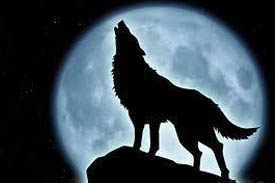Firearms: Cleaning for accuracy
 Now that you have a new handgun, or rifle, you have to care for it-even wall hangers need care. This article will focus on proper care of your firearm to maintain critical accuracy, and in some cases restoring lost accuracy through neglect by former owners, or misinformation.
Now that you have a new handgun, or rifle, you have to care for it-even wall hangers need care. This article will focus on proper care of your firearm to maintain critical accuracy, and in some cases restoring lost accuracy through neglect by former owners, or misinformation.
When you insert a cartridge into a firearm breech the modern bullet projectile will seat against the bore rifleing at the point of the ogive; which means the point of curvature. We want that bullet to be as close and well fitting so that when you release the firing pin into the primer at the base of the cartridge the ensuing burning of the primer, and the powder type contained within the brass cartridge will expand into a hot burning gas that pushes the bullet into the rifleing.
A proper tight “head space” on this bullet keeps the burning gas from eroding (melting) the beginning rifleing (Lands). As the pressure builds up the bullet starts it rotational spin down the barrel, the copper (or in some bullets-lead) covering of the bullet is so seated in the lands as to inscribe on the bullet a particular “signature”.
This is the famous signature that is used by forensics in police procedures to identify which firearm was discharged at which crime.
For our purposes if you retrieve the bullet from the deer carcass you may examine it to determine performance. Keep this thought for a minute.
Moving down the barrel the bullet is slightly imbedded into the bore lands and acts as a burnishing tool to the microscopic roughness of the bore that your new firearm has. That is why it takes a number of rounds of bullets to polish this bore. These imperfections all exist even in the most expensive bore. Our goal is a perfect smooth, crisp land and grooves.
There is residue from the propellant powder that continues to burn down the length of the bore. If this is not cleaned out with a proper tool and proper solvents it will build up and degrade your accuracy. Now to save you the dreary read on my part of bore conditioning and cleaning as well as the best cleaning modern solvents available I will turn you over to a real expert who lives on the rifle range and does nothing but test products to gain that hole in one goal.
You need to talk to and read the pages of data from Mr. Terry Paul at www.sharpshootr.com. This will make excellent, understandable technical data reading along with cleaning discussions, and help you purchase the proper equipment.
In addition if you go to Google Search and type in www.sharpshootr.com or “sharpshootr” per se, you will be rewarded with about six pages of related commentaries and good information about firearm cleaning.
We have already discussed barrel resonance, recoil, and what can be done. This discourse was not all-inclusive as it would take volumes of books to study, but you get the idea and can make a better decision on your next purchase. We want to move on to that bullet leaving the barrel, and if that bullet does the job that you want.
Starting with the 1911 Hague Treaty agreement between nations “of rules of warfare” it was decided that a pointed full metal-jacketed bullet with a lead core would be acceptable in warfare. That pointed FMJ bullet is sort of the same today in the military, well no, it is not, rules and conventions are different now and I will say there is no longer any honor, “Shock and Awe” is the dictate. –However, I digress, again.
When that heated bullet leaves the bore button it is spinning and makes a “jump” or “tumble” from the gas pressure at say 55,000 lbs. push on its base. This can cause inaccuracy if the bullet design does not compensate for this muzzle ballistic phenomenon. Then as the bullet starts its flight path the first effect on the bullet is: temperature of the projectile propellant powder, gun barrel temperature, gravity, followed by humidity/density of the air, wind in the horizontal, and up and down air currents (mostly over canyons and valleys), air temperature, and air temperature thermal layer zones. Briefly I am discussing factors that effect very long flight, and for the Barrett .50 Browning shooters we include earth spin and time of flight.
Fortunately all these ballistic problems are very much solved by the particular ammunition manufacturer and if you read on the box and study accompanying literature you will gain a better understanding of what the terminal effect on that deer/groundhog will be. In following articles about hunting and accuracy we will discuss wind drift and flight path/gravity as factors you can correct for.
Since you are not in a WWII war you do not use FMJ bullets on game. These are made for penetration. You will be using a hunting cartridge with a soft nose, hollow point or ballistic tip. For handguns personal defense loads will probably be in the hollow point design, which is most commonly offered. As a personal note I am very much in favor of the Mag Safe type ammunition.
When you extract the bullet from the carcass notice the entry wound and open the carcass up to note the cavity of the impact, then retrieve the bullet. Did it “mushroom” just like the advertisement said? Did it hit bone, soft organs of muscle tissue? This autopsy is no grimmer, or revolting, than actually killing the animal-you learn from each shoot, each kill so that the next hunt will be more efficient, and more humane.
Large game, like that Kodiak Grizzly, is trying to penetrate a thick mat of hair, a thick skin, a thick mass of grizzle tissue and fat, them on into muscle to reach a heart or brain surrounded by bone. This requires very powerful bullet design backed by a propellant charge with a lot of energy. Conversely a deer is thin skinned, lightly muscled, and easily killed instantly with a vital shot to the head, spinal column, and heart. Now, that bear will drag you off if you are not accurate; sometimes it has been recorded that a wounded deer will turn on the hunter and cut him up very badly with feet and horns.
“One shot-one kill.” (Anonymous)
Store your choice of fresh, new, non-military ammunition in a space that keeps a constant, or near constant stable temperature. Maintain a logbook of factors that influence your accuracy so you can compensate. Later on as hunting season is getting underway we will return to this series for more discussion.
The lead in photo is a picture showing pits and cracks of an old civil war cannon bore. Your firearm needs cleaning, or it will look like this. Contact Terry Paul at www.sharpshootr.com.
God Bless.
Copyright: 2009, Back2theLand.com, Mark Steel.



